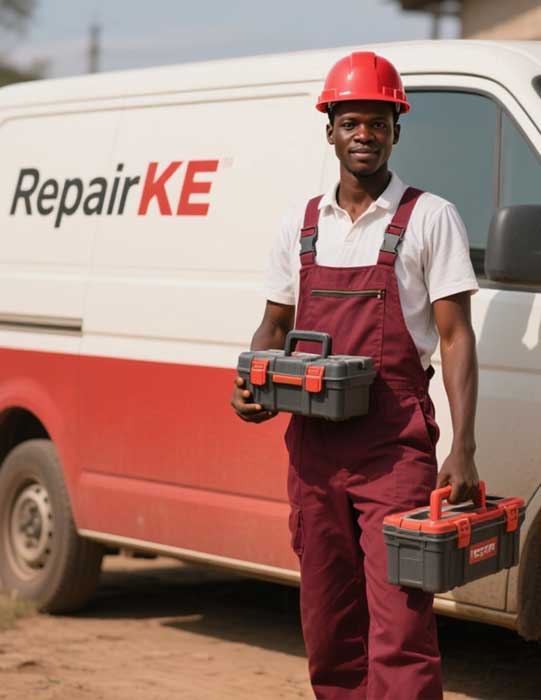
List of Home Plumbing Repairs Solutions
Plumbing issues are a common headache for homeowners, but many can be addressed with the right knowledge and tools. This comprehensive guide outlines the most frequent home plumbing problems and provides practical solutions to fix them, empowering you to tackle repairs confidently or know when to call a professional.
1. Leaky Faucets
Problem: A dripping faucet can waste gallons of water and increase your utility bill. The issue often stems from worn-out washers, O-rings, or seals inside the faucet.
Solution:
- Turn off the water supply to the faucet, either at the shut-off valve or the main water line.
- Disassemble the faucet: For compression faucets, remove the handle and replace the rubber washer at the base of the valve stem. For cartridge or ceramic-disk faucets, replace the cartridge or O-ring.
- Tools needed: Screwdriver, adjustable wrench, replacement washer or O-ring (specific to your faucet model).
- Reassemble and test: Ensure the faucet operates smoothly without leaks.
- Pro tip: Apply plumber’s grease to the new components to extend their lifespan.
- When to call a plumber: If the leak persists after replacing parts or if the faucet is damaged, professional intervention may be required.
2. Clogged Drains
Problem: Slow or completely blocked drains in sinks, showers, or bathtubs are often caused by hair, grease, soap scum, or foreign objects.
Solution:
- Plunger: Use a cup plunger for sinks or a flange plunger for toilets to dislodge minor clogs.
- Drain snake: Insert a drain snake or auger into the drain to break up or retrieve the clog.
- Natural remedy: Pour a mixture of ½ cup baking soda and ½ cup vinegar down the drain, let it sit for 15 minutes, then flush with hot water.
- Chemical drain cleaners: Use sparingly, as they can damage pipes over time.
- Prevention: Install drain screens to catch debris and avoid pouring grease down the drain.
- When to call a plumber: Persistent clogs or blockages deep in the main sewer line may require hydro-jetting or professional snaking.
3. Running Toilet
Problem: A toilet that runs constantly wastes water and is usually caused by a faulty flapper, fill valve, or overflow tube issue.
Solution:
- Inspect the flapper: Remove the tank lid and check if the flapper is sealing properly. Replace it if it’s warped or deteriorated.
- Adjust the chain: Ensure the chain connecting the flapper to the flush valve isn’t too tight or too loose.
- Replace the fill valve: If water continues to run, the fill valve may be faulty. Universal fill valve kits are available at hardware stores.
- Tools needed: Screwdriver, replacement flapper or fill valve, and possibly a wrench.
- When to call a plumber: If the issue involves the toilet’s internal components or a cracked tank, professional repair is advised.
4. Low Water Pressure
Problem: Weak water flow from faucets or showerheads can result from mineral buildup, leaks, or issues with the municipal water supply.
Solution:
- Clean the aerator: Unscrew the faucet aerator, soak it in vinegar to dissolve mineral deposits, and scrub with a brush.
- Check the showerhead: Soak the showerhead in vinegar or replace it if cleaning doesn’t restore pressure.
- Inspect for leaks: Look for hidden leaks in pipes or fittings, which can reduce pressure.
- When to call a plumber: If pressure is low throughout the house, the issue may involve the main water line or pressure regulator, requiring professional diagnosis.
5. Burst or Leaking Pipes
Problem: Pipes can burst due to freezing, corrosion, or high water pressure, causing significant water damage.
Solution:
- Immediate action: Shut off the main water supply to prevent flooding.
- Temporary fix: Use a pipe clamp or wrap the leak with plumber’s tape or epoxy putty until repairs can be made.
- Replace the damaged section: Cut out the affected pipe and replace it with a new section using couplings (for copper or PVC pipes).
- Tools needed: Pipe cutter, replacement pipe, couplings, soldering kit (for copper), or PVC cement (for PVC).
- Prevention: Insulate pipes in cold climates and monitor water pressure to avoid stress on pipes.
- When to call a plumber: Burst pipes or leaks in hard-to-access areas (e.g., behind walls) require professional expertise.
6. Water Heater Issues
Problem: No hot water, inconsistent temperatures, or leaks around the water heater are common issues, often caused by sediment buildup, a faulty thermostat, or a failing heating element.
Solution:
- Check the power source: Ensure the water heater is powered (electric) or the pilot light is lit (gas).
- Flush the tank: Drain the water heater annually to remove sediment buildup that reduces efficiency.
- Replace the thermostat or heating element: Test and replace faulty components using a multimeter for electric heaters.
- Tools needed: Garden hose for flushing, wrench, multimeter, replacement parts.
- When to call a plumber: Gas water heater issues or major leaks require professional attention due to safety concerns.
7. Sewer Line Backups
Problem: Sewage backups or foul odors from drains indicate a clogged or damaged sewer line, often caused by tree roots, grease, or pipe deterioration.
Solution:
- Use a sewer auger: For minor blockages, a sewer auger can clear the line.
- Hydro-jetting: Professionals use high-pressure water to clear stubborn clogs.
- Camera inspection: A plumber can use a camera to identify the cause and location of the blockage.
- Prevention: Avoid flushing non-degradable items and schedule regular sewer line maintenance.
- When to call a plumber: Sewer line issues almost always require professional equipment and expertise.
8. Garbage Disposal Jams
Problem: A jammed or clogged garbage disposal can result from food debris, foreign objects, or motor issues.
Solution:
- Turn off power: Disconnect the disposal from power to avoid injury.
- Clear the jam: Use an Allen wrench to manually turn the disposal’s impeller via the hex-shaped hole on the bottom. Remove debris with tongs, not hands.
- Reset the unit: Press the reset button (usually red) on the bottom of the disposal.
- Prevention: Run cold water during use and avoid disposing of fibrous or starchy foods.
- When to call a plumber: If the motor is burned out or the unit leaks, professional repair or replacement is needed.
9. Sump Pump Failure
Problem: A malfunctioning sump pump can lead to basement flooding, especially during heavy rain. Common issues include a stuck float, clogged discharge pipe, or power failure.
Solution:
- Test the pump: Pour water into the sump pit to ensure the pump activates.
- Clear debris: Remove any obstructions from the pump or discharge pipe.
- Check the float: Ensure the float moves freely and isn’t tangled.
- Backup power: Install a battery backup system for power outages.
- When to call a plumber: If the pump fails to operate or requires replacement, professional installation is recommended.
10. Faulty Washing Machine Hoses
Problem: Leaking or burst washing machine hoses can cause flooding, often due to wear and tear or improper installation.
Solution:
- Inspect hoses: Check for cracks, bulges, or leaks.
- Replace hoses: Swap out rubber hoses for stainless steel braided hoses for durability.
- Tools needed: Adjustable wrench, replacement hoses.
- Prevention: Turn off the water supply to the washing machine when not in use and replace hoses every 5 years.
- When to call a plumber: If the leak originates from the machine’s internal components, professional repair is necessary.
General Tips for Plumbing Repairs
- Safety first: Always turn off the water supply and, if applicable, power before starting repairs.
- Know your limits: Complex issues like sewer line repairs or gas water heater fixes are best left to licensed plumbers.
- Regular maintenance: Schedule annual inspections and perform preventive tasks like flushing water heaters or cleaning aerators.
- Keep a plumbing toolkit: Essential tools include a plunger, pipe wrench, adjustable wrench, pipe cutter, plumber’s tape, and a drain snake.
- Emergency preparedness: Know the location of your main water shut-off valve and keep a plumber’s contact information handy.
By addressing these common plumbing issues promptly, you can save money, prevent water waste, and maintain a functional home. For minor repairs, DIY solutions are often sufficient, but don’t hesitate to call a professional for complex or hazardous problems. With this guide, you’re well-equipped to handle most plumbing challenges that come your way.




